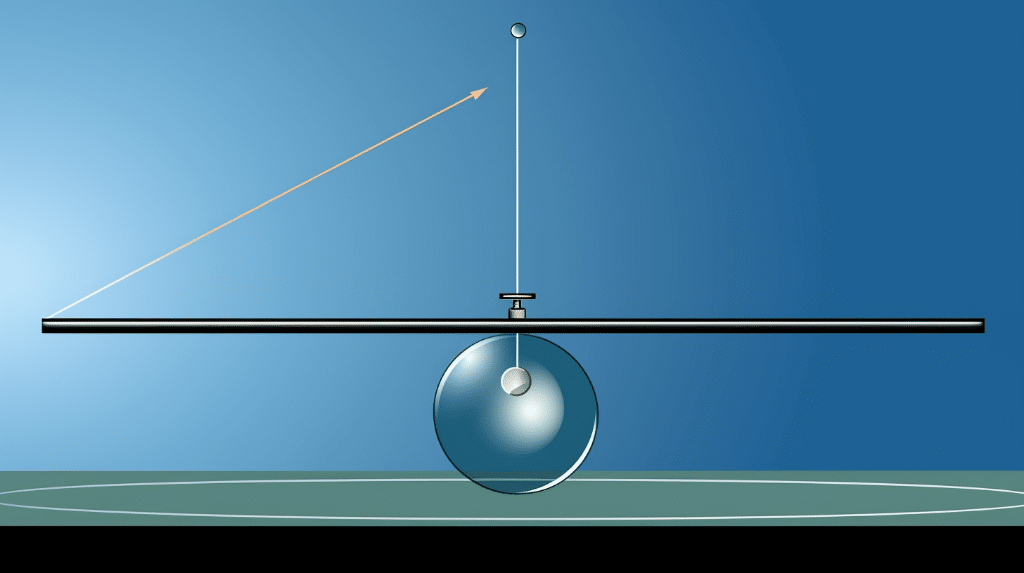Negative velocity is a concept that often confuses students when they first encounter it in physics. However, understanding how to calculate negative velocity is crucial for comprehending the motion of objects in different scenarios. In this blog post, we will explore the meaning of negative velocity, its implications in real-world scenarios, and the methods to calculate negative velocity. So, let’s dive in!
The Meaning of Negative Velocity
What Does Negative Velocity Mean in Physics?
In physics, velocity is a vector quantity that represents the rate of change of an object’s position with respect to time. It consists of two components: magnitude (speed) and direction. When the direction of motion is opposite to the chosen positive direction, the velocity is considered negative. Negative velocity indicates that an object is moving in the opposite direction to the reference point or the chosen positive direction.
The Implication of Negative Velocity in Real-World Scenarios

Negative velocity has various implications in real-world scenarios. Let’s consider an example of a car moving along a straight road. Suppose we choose the forward direction as positive. If the car is initially moving forward with a positive velocity and then begins to slow down and move in the opposite direction, its velocity becomes negative. This change in velocity indicates that the car is decelerating or slowing down.
Calculating Negative Velocity
How to Determine Negative Velocity

To determine whether velocity is positive or negative, you need to compare the direction of motion with the chosen positive direction. If the object is moving in the opposite direction, the velocity is negative. Conversely, if the object is moving in the same direction as the chosen positive direction, the velocity is positive.
How to Calculate Negative Average Velocity
Average velocity can be calculated by dividing the displacement of an object by the time taken. Displacement is the change in an object’s position, and it can be negative to indicate a change in the opposite direction. Let’s say an object moves from position ![]() to position
to position ![]() in a time interval
in a time interval ![]() . The average velocity can be calculated using the formula:
. The average velocity can be calculated using the formula:
![]()
If the displacement, ![]() , is negative, it means the object has moved in the opposite direction, indicating a negative average velocity.
, is negative, it means the object has moved in the opposite direction, indicating a negative average velocity.
How to Find Maximum Negative Velocity

Maximum negative velocity refers to the highest speed an object achieves while moving in the opposite direction to the chosen positive direction. It can be calculated using the formula for average velocity, considering the displacement and time interval. The maximum negative velocity occurs when the object is moving at its highest speed in the opposite direction.
Worked Out Examples on Calculating Negative Velocity
Let’s work through a couple of examples to solidify our understanding of how to calculate negative velocity.
Example 1:
A car moves from position ![]() to position
to position ![]() in a time interval
in a time interval ![]() . Calculate the average velocity of the car.
. Calculate the average velocity of the car.
Solution:
Using the formula for average velocity, we have:
![]()
Substituting the given values, we get:
![]()
The negative sign indicates that the car is moving in the opposite direction to the chosen positive direction.
Example 2:
An object moves from position ![]() to position
to position ![]() in a time interval
in a time interval ![]() . Find the maximum negative velocity of the object.
. Find the maximum negative velocity of the object.
Solution:
Again, using the formula for average velocity, we have:
![]()
Substituting the given values, we get:
![]()
The positive average velocity indicates that the object is moving in the chosen positive direction. Therefore, the maximum negative velocity is 2 m/s, which is the highest speed the object reaches while moving in the opposite direction.
The Relationship Between Negative Velocity and Deceleration

Does Deceleration Have a Negative Sign?
Deceleration refers to the rate at which an object slows down. It can be positive or negative, depending on the direction of acceleration. When an object slows down in the same direction as the chosen positive direction, the acceleration is negative. Conversely, when an object slows down in the opposite direction, the acceleration is positive.
Understanding the Link Between Negative Velocity and Deceleration

Negative velocity and deceleration are closely linked. When an object’s velocity is negative, it indicates that the object is moving in the opposite direction to the positive direction. In this case, if the object is also decelerating, it means that it is slowing down while moving in the opposite direction. The negative velocity and negative acceleration reinforce each other, indicating deceleration in the opposite direction.
What is an example of negative velocity in physics and how can it be calculated?
An example of negative velocity in physics is when an object moves in the opposite direction of a chosen reference point. This means that the object is moving in the opposite direction of the positive direction, resulting in a negative velocity value. For calculating negative velocity, you can use the formula v = (xf – xi) / t, where v is the velocity, xf is the final position, xi is the initial position, and t is the time elapsed. An example illustrating negative velocity in physics can be found at Example of Negative Velocity in Physics.
Numerical Problems on how to calculate negative velocity
Problem 1:
A car is moving in the negative x-direction with an initial velocity of -10 m/s. If it accelerates at a rate of -2 m/s^2 for a time period of 5 seconds, calculate the final velocity of the car.
Solution:
Given:
Initial velocity, ![]()
Acceleration, ![]()
Time, ![]()
We can use the formula for calculating final velocity:
![]()
Substituting the given values, we get:
![]()
![]()
![]()
Therefore, the final velocity of the car is -20 m/s.
Problem 2:
A ball is thrown upwards with an initial velocity of -15 m/s. The ball decelerates at a constant rate of -3 m/s^2. Calculate the time it takes for the ball to come to rest.
Solution:
Given:
Initial velocity, ![]()
Acceleration, ![]()
Final velocity, ![]()
We can use the formula for calculating time:
![]()
Rearranging the formula to solve for time:
![]()
Substituting the given values, we get:
![]()
![]()
![]()
Therefore, it takes 5 seconds for the ball to come to rest.
Problem 3:
A train is initially moving with a velocity of -20 m/s. It accelerates at a rate of 4 m/s^2 for 10 seconds and then decelerates at a rate of -2 m/s^2 for 5 seconds. Calculate the final velocity of the train.
Solution:
Given:
Initial velocity, ![]()
Acceleration during the first 10 seconds, ![]()
Acceleration during the next 5 seconds, ![]()
Time during the first acceleration, ![]()
Time during the next deceleration, ![]()
We can calculate the final velocity using the formula:
![]()
Substituting the given values, we get:
![]()
![]()
![]()
Therefore, the final velocity of the train is 10 m/s.
Also Read:
- How to find velocity vector
- Does velocity affect potential energy
- How to calculate velocity in loop quantum gravity
- How to calculate velocity in solid state physics
- How to find velocity of ultrasonic waves
- Velocity vs acceleration graph
- How to find power with velocity and force
- Zero average velocity
- How to measure velocity in event horizons
- How to find acceleration with velocity and distance graph
Hi, I’m Akshita Mapari. I have done M.Sc. in Physics. I have worked on projects like Numerical modeling of winds and waves during cyclone, Physics of toys and mechanized thrill machines in amusement park based on Classical Mechanics. I have pursued a course on Arduino and have accomplished some mini projects on Arduino UNO. I always like to explore new zones in the field of science. I personally believe that learning is more enthusiastic when learnt with creativity. Apart from this, I like to read, travel, strumming on guitar, identifying rocks and strata, photography and playing chess.